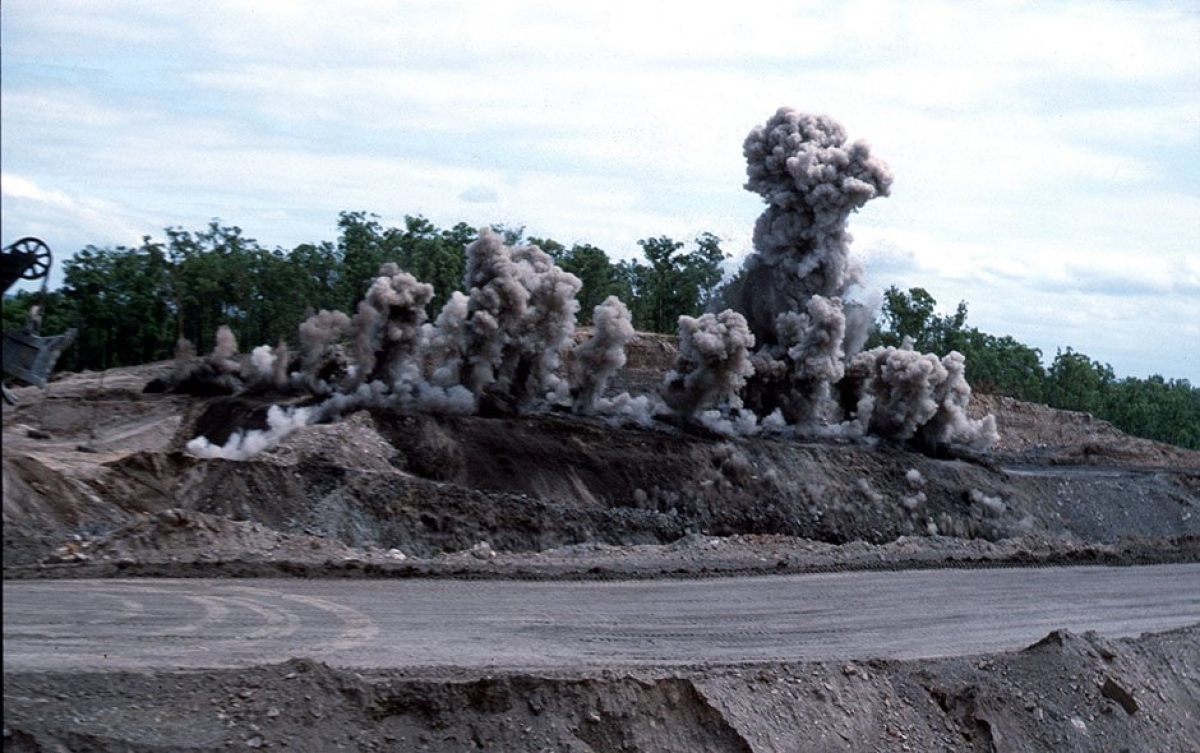Flyrock – the fragments of rock thrown and scattered during blasting – is responsible for a large proportion of all blasting-related injuries and fatalities. Flyrock is a potential hazard anytime and anywhere there is blasting.
Reduce flyrock hazards by adhering to the safety tips and best practices below.
Blasting Best Practices
- Conduct effective workplace examinations. Identify all hazards and take action to correct them.
- Ensure all miners are trained to identify all potential hazards and emergency procedures, including evacuation procedures.
- Guard or barricade all access routes to the blasting area to prevent the passage of persons or vehicles.
- Clear and remove all persons from the blast area unless suitable blasting shelters are provided to protect persons from flyrock.
- Consider mine specific conditions and rock strata when designing blasts to prevent flyrock.
- Maintain and use all available methods of communication, such as sirens and radios, to warn persons of impending blasting operations.
- Use a central blasting system and schedule blasting between shifts or on off-shifts when no one is present.
- Closely follow mine policies and procedures through all phases of the blasting operation.
Flyrock-related Incidents
The following accidents and fatalities can be used as case studies for training miners and mine operators about fly rock safety and best practices.
- On January 12, 2016, flyrock left the mine site during a blast and struck the windshield of a pick-up truck traveling by on a public road near the mine site. The driver and the passenger both received minor injuries.
View Serious Accident Alert and Best Practices
- On December 4, 2013, a 63-year old lead man with 16 years of experience was killed at a crushed stone mine. The victim initiated a blast and was struck by flyrock from the blast. He was standing 153 feet from the nearest blast hole and was struck by rock as large as 19 inches long by 14 inches wide by 7 inches thick.
View Fatalgram and Best Practices
- On September 7, 2011, a 30 year-old miner with 1 year of experience was killed at an underground gold mine. The victim was on a ramp waiting for a blast to be initiated. When the round was initiated, small rock and debris traveled through a 3-inch diameter diamond borehole, striking him.
View Fatalgram and Best Practices
- On Monday, July 16, 2007, a mechanic with 20 years of mining experience was fatally injured at a surface mine when he was struck by flyrock from blasting operations. The victim and another mechanic had just completed their shift in an equipment parking/service area approximately 1,500 feet from the area being blasted.
View Fatalgram and Best Practices

